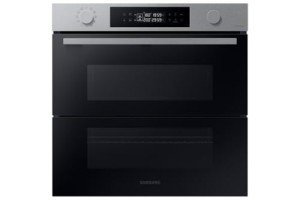The Rise of Integrated Electric Ovens: A Comprehensive Guide
Integrated electric ovens are ending up being progressively popular in modern-day cooking areas due to their sleek style, energy effectiveness, and advanced cooking features. Designed to mix seamlessly with kitchen cabinets, these appliances not just improve looks however also provide a series of functionalities that accommodate the culinary requirements of contemporary families. This short article will explore the advantages of integrated electric ovens, how they compare to conventional ovens, and crucial aspects to think about when acquiring one.
What is an Integrated Electric Oven?
An integrated electric oven is designed to be built into kitchen cabinetry, offering a structured look that makes the most of area effectiveness. Unlike freestanding ovens, integrated designs often include a flush fit with cabinetry and come with styles that can match or match the surrounding kitchen decoration. These ovens typically feature a large variety of functionalities, including convection cooking, self-cleaning options, and wise technology functions.
Advantages of Integrated Electric Ovens
The appeal of integrated electric ovens depends on their many benefits. Below are some of the key benefits:
Aesthetic Appeal
- Integrated ovens provide a clean and modern appearance.
- They can be personalized to match the kitchen's cabinets and design theme.
Space Efficiency
- Created to maximize the available kitchen space.
- Ideal for smaller sized kitchens where freestanding designs might be troublesome.
Advanced Cooking Features
- Lots of designs consist of functions such as convection heat, steam cooking, and several cooking modes.
- Smart ovens can even link to Wi-Fi for remote monitoring and control.
Energy Efficiency
- Electric ovens often supply more consistent heating and faster cooking times compared to gas ovens.
- More recent models are developed with energy-saving technologies, which can help lower energy expenses.
Improved Safety
- Integrated ovens normally include features such as automobile shut-off and child lock functions for included safety.
Table 1: Comparison of Integrated Electric Ovens and Traditional Ovens
| Feature | Integrated Electric Oven | Conventional Oven |
|---|---|---|
| Design | Built-in, flush-fitting | Freestanding, takes up more area |
| Cooking Efficiency | Usually quicker, more even warming | Varies, normally longer warm up |
| Visual Integration | Smooth with cabinets | Standout home appliance |
| Space Usage | Space-saving | Requires more floor space |
| Advanced Features | Typically includes smart technologies | Limited technological integration |
| Energy Efficiency | Normally more energy-efficient | Can differ by model |
Secret Features to Look For in Integrated Electric Ovens
When looking for an integrated electric oven, various functions need to be taken into consideration to guarantee you pick a design that fits your cooking style and preferences. Here are some crucial functions to think about:
Size and Capacity
- Search for ovens that fit within your kitchen cabinetry and assess internal capability based upon your cooking requires.
Cooking Modes
- Think about designs that use multiple cooking functions including bake, broil, steam, and convection to expand culinary possibilities.
Self-Cleaning Options
- Self-cleaning modes conserve time and effort in preserving the oven.
Control Options
- Touchscreen manages or wise tech combination for remote gain access to can include convenience to cooking.
Energy Rating
- Choose energy-efficient designs with excellent scores to guarantee lower operating costs.
Warranty and Support
- Examine for service warranties to cover repairs and replacements and the schedule of customer care.
FAQs
Q1: What makes integrated electric ovens different from built-in ovens?
A1: Integrated electric ovens are particularly designed to mix into cabinetry, offering a smooth aesthetic, while built-in ovens might not necessarily have the exact same flush style and typically stick out more as private appliances.
Q2: Are integrated electric ovens more costly than conventional ovens?
A2: Generally, integrated electric ovens can be more costly due to their style and advanced functions. However, the long-lasting energy cost savings and improved efficiency frequently offset the preliminary expense.
Q3: How do I make sure correct installation of an integrated electric oven?
A3: It is recommended to work with a professional for installation, as integrated ovens require exact measurements and can involve electrical connections that must abide by regional structure codes.
Q4: Can I tailor the look of my integrated electric oven?
A4: Yes, many makers use customizable panels or finishes to match your kitchen cabinets, permitting for a completely integrated appearance.
Q5: What upkeep does an integrated electric oven usually need?
A5: Regular cleaning, particularly after heavy use, and inspecting seals and vents for wear are advised to maintain the oven's performance and look.
In conclusion, integrated electric ovens are a practical and elegant addition to modern-day kitchen areas. Their advantages consist of visual appeal, energy efficiency, and advanced cooking functions, making them a popular option for home cooks. Understanding the crucial qualities and comparing various models can help customers make notified buying decisions and pick an integrated oven that best fits their culinary requirements and kitchen design. With read on and technological improvements, these ovens are poised to end up being staples in the kitchen for many years to come.

